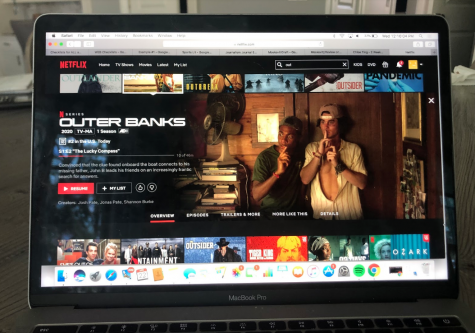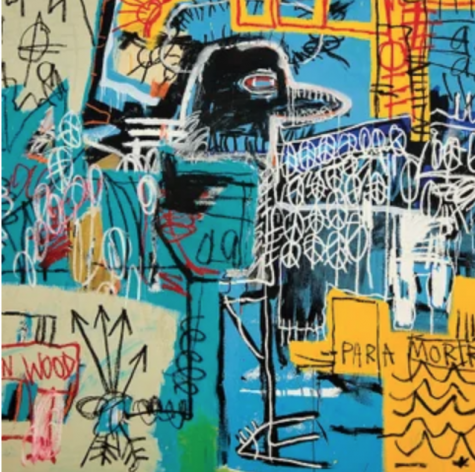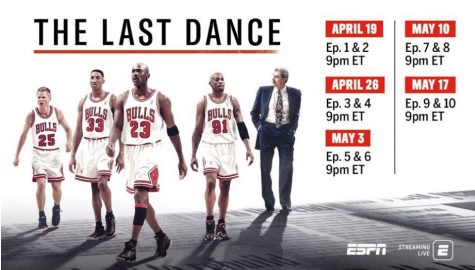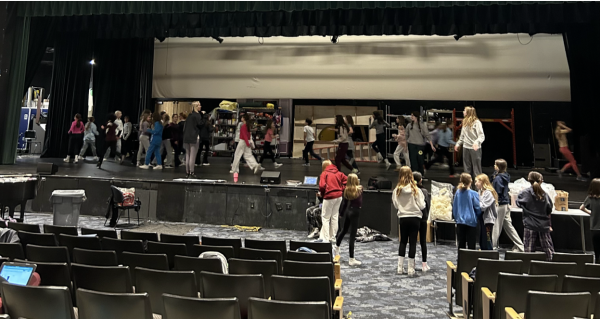“Brooklyn” is a fun watch but highly overrated
In Eavan Boland’s poem, “The Emigrant Irish,” the speaker laments that Americans put the experience of Irish immigrants to America “out…of [their]…minds.” Adapted from the Colm Tóibín novel, the Oscar-nominated, independent period drama, “Brooklyn,” brings this experience back to 2015.
Set in 1950’s New York City, “Brooklyn” respins the stuck-between-two-guys trope into something substantial: the plight of Eilis Lacey (Saoirse Ronan), a young, barely employed Irish emigré flung from the maternal comforts of her family and small town, into the New World. Out-of-place in her gossipy boarding house, struggling to please her boss, and friendless, Lacey’s struggles are epitomized as she collapses in bed, sobbing after a long day. But then she encounters love interest, Tony Fiorello (Emory Cohen). Her romance blossoms with every other aspect of her life; Lacey earns a bookkeeping certificate, impresses her boss, and is heartily welcomed into Fiorello’s family.
Then an unforeseen tragedy brings her back to the calm, verdant expanse of Ireland, and Jim Farrell (Domhnall Gleeson), the rugby player who embodies this beloved land. Lacey’s comforting experience back in her homeland leads to the critical question of the film: Does she stay with a life she’s familiar with, or return to a new one she’s forged on her own?
This plot falls “a bit flat,” according to Variety’s Peter DeBruge. I agree. For a story about the trepidations of a poor immigrant, Lacey’s situation seems too “nice”; a priest finances her Brooklyn College education, she lives in a manicured brownstone neighborhood, and is entrusted with high-end department store position, despite having no prior experience. While these details definitely make for a more beautiful movie (versus that with a tenement setting), they detract from the image of independence Lacey crafts.
Another issue I take as a feminist is the role of men in “Brooklyn.” Until she meets Fiorello, Lacey is beside herself with homesickness. Her later happiness is dependent on the experiences he introduces her to, rather than ones she discovers herself. Even in Ireland, the film mostly focuses on Lacey’s marital prospects because Farrell is once again single.
This is not to say that “Brooklyn” does nothing well. Ronan, whose performance is up for a Best Actress Oscar, showcases a successful transition to adult film that escapes many other former child actors. Her skill is especially noticeable in sad scenes, such as when Lacey first leaves Ireland. Her face is long to match the goodbyes, and the nuances in her expression deliver her from nervousness to helpless remorse as the ship finally departs.
“Brooklyn” is also gorgeous, much of which can be attributed to the vibrant, jewel-toned selections of the costume designer. The sartorial selections also mean something; “Brooklyn” is the first film I’ve seen that incorporates color connotation this abundant. Lacey dons an emerald green coat, symbolizing Ireland, as she leaves it. Later, she incorporates a ruby red headscarf, indicative of the fiery American confidence she’s discovered. Back in Ireland, as she attends a wedding with Farrell, the red church door stands out in its setting; it’s impossible for her to ignore her life in America.
If you’re seeking what DeBruge describes as “escapist entertainment,” Brooklyn is your movie, boasting the breathtaking visuals typical of a period drama along with a talented cast. However, if you seek depth in the script itself, look elsewhere. As a light watch, it’s superior to a standard rom-com, but it’s certainly not substantial enough to merit a 98 percent Rotten Tomatoes rating.

Casey Lu ’16 is not your typical Staples student. A city girl at heart and a lover of the color black, Lu sees the world a bit differently from the majority...



























































